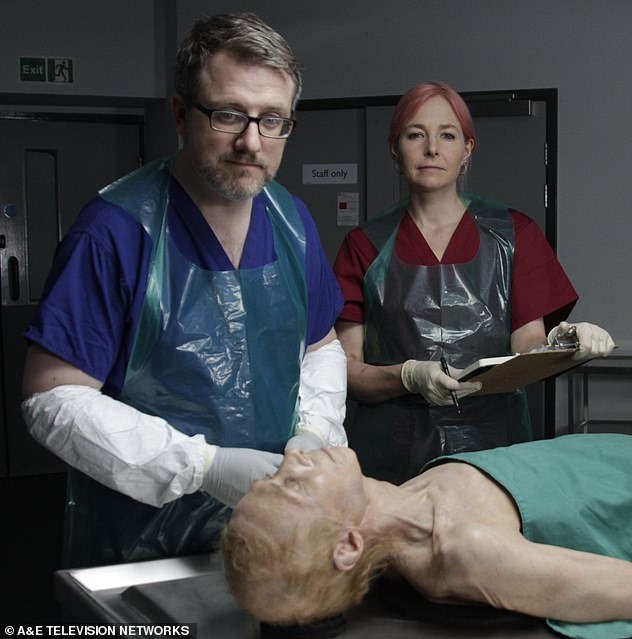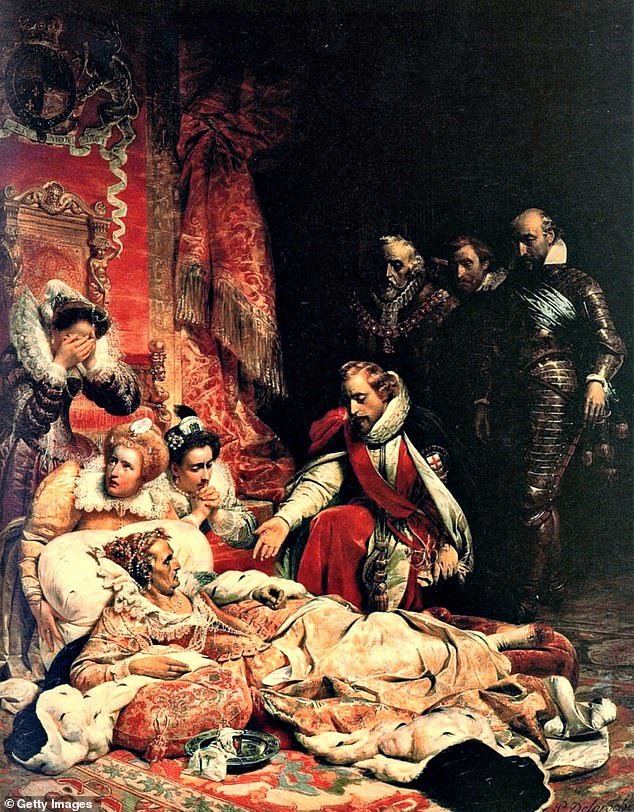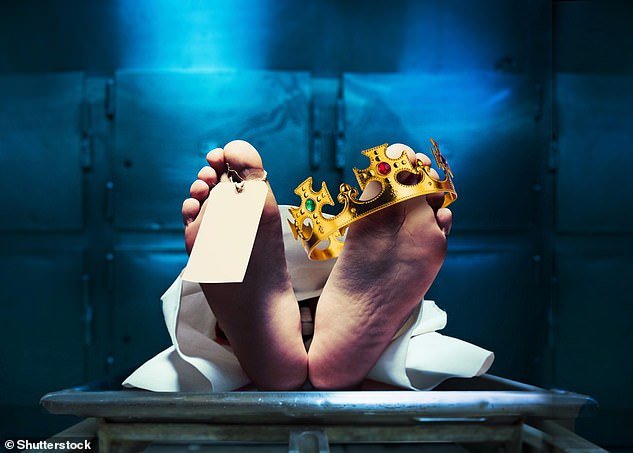Did doctors kill Charles II …with a cocktail of quack cures?
>
The list of cures prescribed to a sick Carlos II in the last week of his life sounds more like ruin than remedy. The Merry Monarch was bled, burned, and fed ground-up human skull and bezoar stone, which is a ball of hair from the stomach of a goat.
Basically, says a new investigation into her death at 54, her doctors started at the easy end of the scale with bleeding and cupping, and worked their way up to witchcraft.
We know all about the purgative syrups of buckthorn and peony water that were given to the king, the white hellebore (which covered its nostrils to stimulate sneezing), the ‘sacred bitter’ powders and rock salt enemas and pigeon poop applied to the soles of the feet. real feet, because these ‘remedies’ were recorded by their doctors. What we have never known is what really killed him on February 6, 1685.
Now a new documentary called Royal Autopsy, a mix of cold case medical investigation and period drama, aims to find out.
A new Sky History documentary, Royal Autopsy, a mix of cold case medical investigation and dramatics, aims to find out what really killed Charles II (pictured, a portrait of the royal in 1680)
It is presented by anatomist and biological anthropologist Professor Alice Roberts and Home Office pathologist Dr Brett Lockyer, who also re-examined the death of Queen Elizabeth I in 1603 for this two-part article on Sky History. .
It begins with a warning that the show is ‘not for the faint-hearted…’ and, in fact, there lies the Restoration monarch on a headstone with a toe tag.
We learn that Charles II was recorded to have died of apoplexy, the 17th-century term for a stroke, but there were also rumors of syphilis, malaria, and poisoning, either criminal or accidental.
Since Charles II was an amateur scientist and alchemist, it is not beyond the bounds of the possibility that he poisoned himself.

The program is organized by anatomist and biological anthropologist, Professor Alice Roberts, and Home Office pathologist, Dr Brett Lockyer.
Familiar to fans of The Bill, in which he played Jim Carver for 21 years, Mark Wingett stars as King Charles enjoying an epic dinner and a night of slapping and tickling with his favorite mistress, Louise, the Duchess of Portsmouth.
Suddenly though, it’s more Silent Witness than Wolf Hall when we switch to an autopsy recreated in Bristol three and a half centuries later.
Dr. Lockyer makes a “Y” shaped incision in the late monarch’s chest, breaks his ribs, and removes the plucking, organs between the neck and pelvis (these are ethically sourced pig organs, because that’s the best combination).
The pathologist intends to examine the kidneys, which for the purposes of the documentary have been lightly poached in a cup of boiling water and then coated in semolina to alter their appearance.
If you think this is treason, you should listen to what they do to Queen Elizabeth. The ‘bronchial pus’ in Her Majesty’s lungs was recreated using Ambrosia custard and green food colouring.
But these are glimpses of levity behind the scenes in what is serious academic research. Professor Roberts is Professor of Public Engagement in Science at the University of Birmingham. Dr Lockyer’s cases for the Home Office include autopsies on some of the Grenfell Tower victims and those killed in the London Bridge and Borough Market terrorist attack.

A painting of Elizabeth I’s death. The ‘bronchial pus’ in Her Majesty’s lungs was recreated using Ambrosia custard and green food coloring in the documentary.
Together they search for the truth behind the deaths of two monarchs, whose endings have given rise to centuries of debate.
The death of Carlos II was a blow to the country that he ruled for 25 years. He had brought life and fun back to court after the hard days of Oliver Cromwell.
Standing at an imposing height of 6 feet 2 inches, he appeared to be in good health. But on February 2, 1685, he fell ill.
Professor Roberts and Dr Lockyer recreate the cuts on the king’s arm and neck that would have been made by his doctors drawing blood, and the circular bruises on his shoulders left by ‘cupping’, which he uses inverted cups on the skin to create suction and supposedly draw out toxins.
In those days, a surgeon could amputate your arm or cut your hair; they made their living doing both.
There are burns from hot irons and chemicals like ground Spanish beetle, which was used to blister her skin. Both were part of the purge carried out by the royal physicians Edmund King and Charles Scarburgh.
Medical theory in the 17th century still centered on the doctrine of the four humors (blood, black bile, yellow bile, and phlegm) that had existed since the time of the ancient Greeks. The recipes were based on plants or superstitions and surgery was everyone’s game: a surgeon could amputate your arm or cut your hair, since he made a living doing both.
The documentary shows us how, growing desperate, Charles’s doctors insisted on more and more herbal remedies, potentially exacerbating the symptoms they were supposed to alleviate. Professor Roberts talks to Nell Jones, head of plant collections at the Chelsea Physic Garden in London, who points out that many healing plants are also poisonous; it is a question of dosage.
When the plants didn’t work, court physicians turned to superstition. They administered ‘The King’s Drops’, a tincture of human skull mixed with vipers and staghorn from the antlers of a male deer.
A skull was believed to contain the essence of another person and, like the bezoar stone extracted from the stomach of a goat, was a mythical cure of last resort.
Historian Dr Onyeka Nubia from the University of Nottingham explains that doctors “are afraid they’ll be blamed for killing the king, which is why they throw every remedy they know or have heard of at him, hoping something produce a positive result.
The result was an end far more painful than anyone lower down the social pecking order might have experienced. “I ended up feeling desperately sorry for the king,” says Professor Roberts.
If he had been the man in the street sweeping up the horse droppings, he probably would have died a more comfortable death.

Viewers learn that Charles II was recorded to have died of apoplexy, the 17th-century term for a stroke, but there were also rumors of syphilis, malaria, and poisoning, either criminal or accidental. Stock image used
After analyzing the king’s symptoms, the presenters come to a conclusion about what they would put on his death certificate if they signed it in 2023. To be clear, there is no record of any autopsy of Carlos II, this is a reconstruction. based on contemporary accounts of his last days, performed in a prosthetic body.
Along with the period drama segments directed by Wingett, it is a first for British television.
Dr. Lockyer believes the time is right for this type of treatment because attitudes toward death have changed. “Today people are fascinated with it,” he says. “The taboo that existed when I was a kid in the early 80s, when nobody talked about death, no longer exists. Everyone wants to know what happens to you when you die.
He says his role was to apply the principles of modern pathology and treat real death as he would any cold case.
“I approached it the same way I would approach an autopsy on a patient dying today. The last days of a life can give you a lot of information. If you take that as your starting point and look at all the historical documents surrounding the death of Carlos II, you ask yourself questions that may not have been asked before.”
I felt very sorry for Carlos II. If he had been the man in the street who swept up the horse droppings, he would have died more comfortably. – Professor Alice Roberts
Professor Roberts agrees. “It’s a mystery, and mysteries are attractive,” he says. “It’s fascinating to ignore centuries of speculation and go back to what was written at the time.”
If their televised autopsies prove popular, the couple is willing to stick with the format.
In fact, they looked at six British monarchs before choosing Charles II and Elizabeth I.
Both feature other historical figures that piqued your curiosity. For Professor Roberts, there is the eternal question of what happened to Cleopatra: was she really an asp? And Dr. Lockyer is completely interested in another king.
“I’m not a historian, so it would have to be Elvis,” he says.
Royal Autopsy, Tuesday February 7, Sky History.
